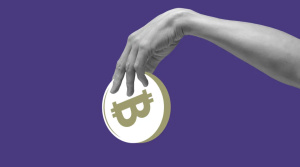Interest rates play a fundamental role in the global economy, influencing everything from the cost of borrowing to the return on savings. For both individuals and businesses, staying informed and strategically managing the impact of fluctuating interest rates is crucial. In this article, we explore the dynamics of interest rates, their effects on different financial aspects of life, and how to stay ahead in the ever-changing interest rate landscape.
Understanding Interest Rates
Interest rates are a percentage charged or paid for the use of money over time. They have wide-reaching consequences in various financial domains, such as loans, savings, and investments. There are primarily two types of interest rates:
Nominal Interest Rate: The nominal interest rate is the stated rate on a financial product, such as a savings account or a loan. This rate doesn’t account for inflation or compounding.
Real Interest Rate: The real interest rate is the nominal rate adjusted for inflation. It indicates the actual return or cost of borrowing, factoring in the eroding effect of inflation.
The Effects on Borrowing
For borrowers, interest rates can be both a blessing and a curse. The cost of borrowing heavily depends on prevailing interest rates. When interest rates are low, borrowing becomes more affordable, and loans are cheaper. This can stimulate spending and investment, spurring economic growth. However, when interest rates rise, borrowing becomes costlier, potentially constraining spending and business expansion.
Mortgages, auto loans, and credit card debts are examples of how interest rates affect daily life. Homeowners may see their mortgage payments rise as interest rates increase, while consumers with variable-rate credit cards may experience higher monthly payments, impacting their financial well-being.
The Impact on Savings
Conversely, savers face a different set of challenges. When interest rates are low, savings accounts and certificates of deposit (CDs) offer minimal returns. This can be frustrating for savers, especially those relying on these savings for retirement or emergencies. In a low-interest environment, it becomes challenging to grow wealth through traditional savings accounts alone.
In such cases, investors may seek higher-yield options like stocks or bonds to generate better returns, albeit at a potentially higher risk.
Investment Strategies
Investors must navigate the interest rate landscape with care, as it has far-reaching consequences for their portfolios.
Fixed-Income Investments: When interest rates rise, the value of existing fixed-income investments, such as bonds, tends to decrease. However, these investments provide a steady income stream, which can be an attractive feature for risk-averse investors.
Equities: Stocks can be an appealing investment during periods of rising interest rates, as they may outperform fixed-income securities. Economic growth often accompanies interest rate hikes, which can boost corporate profits and, in turn, stock prices.
Diversification: A diversified portfolio that combines various asset classes can help mitigate the impact of interest rate fluctuations. By spreading risk across different types of investments, you can balance potential losses in one area with gains in another.
Monitoring the Federal Reserve: Paying attention to the policies and decisions of the Federal Reserve can provide valuable insights into future interest rate changes. The Federal Reserve’s actions have a substantial impact on the overall interest rate environment.
Conclusion
Interest rates are a ubiquitous part of financial life, impacting both borrowers and savers. Managing their influence is essential to maintain financial stability and achieve your financial goals. By staying informed, understanding how interest rates affect different aspects of your financial life, and crafting a well-thought-out investment strategy, you can navigate the interest rate landscape more effectively. While it’s impossible to predict interest rate movements with certainty, you can position yourself to stay above the fray and make informed decisions based on the prevailing economic conditions.



























